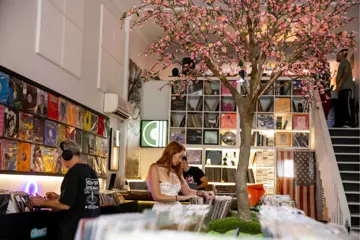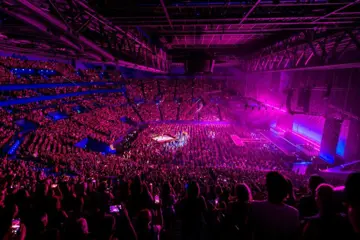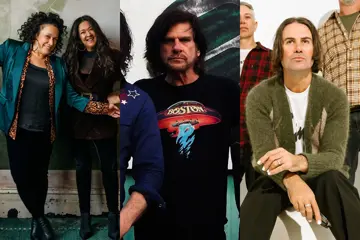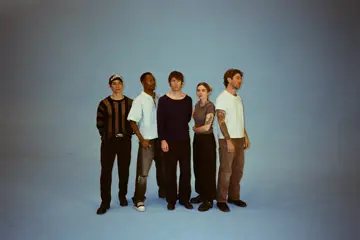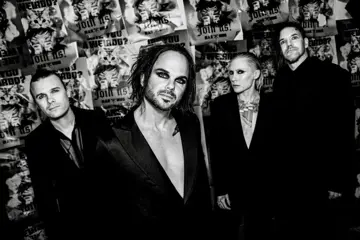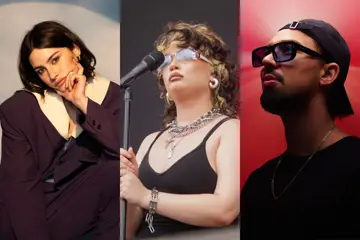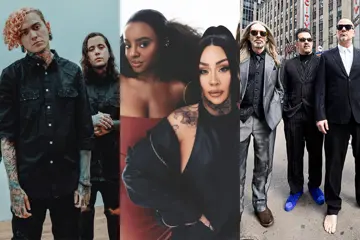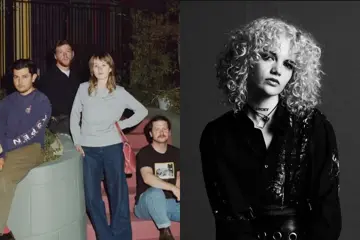Within the last month, Music Business Worldwide broke the news that Spotify was changing how they pay artists. There are generally three pillars to this change.
Introducing a threshold of minimum annual streams [1,000 streams] before a track starts generating royalties on Spotify – in a move expected to de-monetize a portion of tracks that previously absorbed 0.5% of the service’s royalty pool;
Financially penalizing distributors of music – labels included – when fraudulent activity is detected on tracks that they’ve uploaded to Spotify; and
Introducing a minimum length of play-time that each non-music ‘noise’ track must reach in order to generate royalties.
These changes - specifically item (1) - quickly drew criticism from artists. As both an active artist and an employee at a streaming company, I think much of the criticism was misguided. Let me explain.
Streaming Isn’t All Good Or All Bad
To properly understand the changes to Spotify’s royalty system, we need to understand two things: how music gets on Spotify and how artists are paid for people listening to their music on Spotify. I’ll start with the former.
Unlike YouTube, SoundCloud, and Audiomack, artists cannot upload their music directly to Spotify. They have to go through a distributor. If you are signed to a major label (i.e., Sony, Universal, Warner) or notable music company (i.e., Empire, Believe), they handle distribution for you. In most cases, they have a direct feed set up with each streaming service to efficiently deliver your music to the platform.
Don't miss a beat with our FREE daily newsletter
Most artists are not signed to one of these entities, though. Those artists have to go through independent distributors to get their music up on Spotify and a number of other streaming services. Popular independent distributors include TuneCore, DistroKid, CDBaby, MGM, Gyrostream and Amuse. For either a flat fee, cut of your royalties, monthly subscription, or some combination of those things, they will distribute your music to the streaming services of the world.

Some plans from the popular distributor TuneCore.
Understanding how digital distribution works, how do royalty payments get from the streaming service to artists? It’s actually somewhat complicated. I wrote about this in a two part series earlier this year, but I will summarize the process again.
Contrary to popular belief, artists are not paid per stream. Many platforms, Spotify included, use a pro-rata royalty system. Here’s how that works in broad strokes. Imagine that last month, Spotify generated $5,000,000. Imagine that you are an artist and received 100,000 streams on your music in that month. Finally, imagine that there were 8,000,000,0000 streams across the entire platform in that month. Your payout would be (100,000 / 8,000,000,000) * $5,000,000, or $625.
In short, you are paid a share of the total revenue pool based on how many streams you received compared to the entire platform. What this means is that you can receive the same number of streams in two separate months and be paid different amounts. To illustrate this idea, let’s take that same situation as above, but imagine Spotify made $90,000,000 instead of $5,000,00. Your 100,000 streams would now be worth (100,000 / 8,000,000,000) * $5,000,000, or $11,250, just because Spotify made more money.
Spotify does not pay artists directly. For you to collect that money, Spotify will send it to your label or distributor. The relevant entity will then divvy it up and either automatically send it to you or allow you to withdraw it at your leisure. Sort of. Most independent distributors have a withdrawal minimum. Here is what those minimums look like at DistroKid, a popular independent distributor.

DistroKid payment minimums.
These minimums may look small, but it usually takes an artist a few hundred to a few thousand streams to hit them. For example, in January 2023, I earned $1.77 across streaming platforms. In that month, I had 1,025 streams on Spotify. Though all of my earnings didn’t come from Spotify, the majority did.
My paltry earnings actually make me a bit of an outlier, though. There are 100 million tracks on Spotify today. Only 37.2 million have reached 1,025 all-time streams. Furthermore, over 9 million artists have music on Spotify. My 452 monthly listeners in January 2023 put me in the top 10% of all artists.
So, if most tracks aren’t being streamed enough to meet the withdrawal minimums for independent distributors, then where is that money going? In all likelihood, it is generating income for distributors as it sits in their bank accounts collecting interest. Artists will certainly never touch the interest, but in many cases, they won’t touch the money they actually earned either because they will never reach the withdrawal minimum. Spotify claims that they want to put this unreachable money back in the pockets of working artists.
In this new world, any royalties generated on tracks with under 1,000 plays in a year won’t be paid out. Those royalties will be put back into the revenue pool to be paid out to on tracks that meet that yearly 1,000-stream threshold. Of course, some of that money is going to end up in the pockets of the Taylor Swifts and Ed Sheerans of the world, but it will also end up in the pockets of middle-class artists. Spotify claims that next year this additional pool of money will total around $40 million.
Still, you might think this is wrong on principle. Whether you get two streams or two million streams, you deserve to be paid. Furthermore, if streaming never took hold and you were making music in the era of physical media (i.e., CDs, cassettes, vinyl), you would be getting duly compensated for your art. I don’t think either of those claims are completely valid. I’ll start with some questions to explain why.
If you play a song for three seconds and skip the rest, should it be eligible for royalties in the same way if you listen to a song all the way through?
If you release a song and leave your mother leaves her phone playing it on a loop for two straight months, should each repeated play be eligible for royalties even though nobody was actually listening?
If you listen to an album of white noise made for the express purpose of putting people to sleep should it generate royalties in the same way as when you listen to the music of Van Halen?
I think most people would answer “No” to those questions. But we don’t have to rely on hypotheticals. Those questions and their answers already have a profound effect on artists. While the industry has come to agree that plays under a certain threshold of time don’t qualify for royalties (i.e., less than 30 seconds), it is still trying to grapple with how to handle fraudulent and non-musical plays.
Playing a song on repeat is a really basic example of something that might be considered fraudulent, but don’t let the simplicity dissuade from the fact that streaming fraud isn’t a problem. A 2021 study found that 1% to 3% of all streams in France, or 1 billion streams, were fraudulent, meaning that there was likely no actual person listening to the music. Fraud at that scale can be very sophisticated, carrier out by bots, and difficult to detect.
In terms of non-music, a report from Bloomberg earlier this year found that Spotify was likely paying out tens of millions of dollars to uploads that were just white noise. While the yearly 1,000-stream minimum got most of the media attention, Spotify’s royalty adjustments are also trying to deal with those two issues.
Even if we don’t agree on the particulars, I think we can agree on the fact not every stream is created equal. But what about the second point that I raised above? If we could just do away with streaming and head back to the era of physical media then all musicians would be making more money. This is likely incorrect for two reasons.
First, if we look at inflation-adjusted U.S. recorded music revenue by year, it’s almost unarguable that music industry-revenues were in a death spiral before streaming became ubiquitous.

Digital download stores like iTunes did not stem the bleeding created by Napster and file-sharing in the aughts. Streaming did, though. Streaming was the first thing that was more convenient than piracy. The streaming model is far from perfect, but it has at least turned things in the right direction.
Additionally, part of the reason music industry revenue was meteoric in the 1990s was not because people had some deep respect for music that they gave up on. It was for two more mundane reasons:
• The music industry could sell you the same album in different formats at the same time
• CDs were really expensive
According to a USA Today history of the format, when CDs were first marketed, they “cost $16-$20 … the equivalent of $48-$60 today”. That’s not cheap. This expensiveness becomes even clearer when we look at actual units sold by format. Between 1985 and 1999, there was a 78.7% increase in total units sold in the United States. In that same period, inflation-adjusted revenues increased 115.9%. That difference is largely explained by the price-point of the compact disc.

NOTE: Streaming not included in this chart.
Even so, if you were making music during that CD-boom, would you have been making more money than you do on streaming today? Probably not. I’ve discussed the importance of physical media before, but the advent of digital recording and distribution made it is easier than ever before to make a professional-sounding song and release it for all the world to hear.
In all likelihood, if you were making music in 1990, you wouldn’t have had the opportunities that you do now. I say this given that we now likely see more music released in a calendar year than we did across decades of the 20th century. Maybe in 1990s you could have recorded some demos. Maybe you could have gotten into a studio to make a single. But there was almost no chance you were getting it distributed widely. Digital recording, digital distribution, and internet streaming has afforded you that opportunity.

The cover to my first EP. I got 100 CDs made a decade ago. I still have a few.
For over a century, the music industry was in the product business, manufacturing songs in various formats and selling them to consumers, along with devices to play those songs back. The internet turned all of that on its head. Suddenly, the music industry was in the service business, selling access to their intellectual property for a monthly fee.
I recount this history to say that streaming is in its infancy. It is far from perfect. I see that every day as a musician. And I see it everyday as an employee at a streaming company. But rather than complain that streaming has destroyed music, we can propose alternative solutions that have a tangible impact on artists. I’ll talk about two.
First, we can figure out different ways to slice the revenue pie. Currently, Spotify uses the pro-rata system that we discussed earlier. But there are other ways to divvy up revenue. Earlier this year, I discussed the user-centric system with Michael Pelczynski, a former SoundCloud executive. This system ascribes royalties at the listener level. So, if some person only listens to your music for the entire month, you get their entire subscription, net the streaming service’s cut. SoundCloud and Deezer, among others, have begun to experiment with these models.
Still, the revenue pie is the same size in all of these models. We are just slicing that pie differently. We can also talk about ways to increase the size of the pie for artists. Here are few ways you can do this.
Get more listeners: This is easier said than done, but more listeners on streaming platforms typically equates to more revenue and, subsequently, larger payouts for artists.
Increase subscription prices: While video streaming services like Netflix have increased prices steadily over the last decade, music streaming has barely moved from $10 per month in the United States.
Improve Ad Monetization: Many streaming listeners do not have a paid monthly subscription, especially outside the United States. Ads are run while these users listen so artists can still be compensated. Any way to generate more revenue from ads will also increase the size of the revenue pie.
Decrease the take of streaming services, labels, and publishers: According to Spotify, “Nearly 70% of … revenue is paid back as royalties to rights holders, who then pay the artists and songwriters, based on the agreed terms.” If Spotify increased that percentage, artists would make more. But, as previously noted, Spotify is not paying artists and songwriters directly. They are paying labels, distributors, and publishers. Those entities distribute money to artists. If those entities decreased their take, artists and songwriters would also get paid more.
Decrease fees on digital app stores: In general, Google and Apple take a 30% commission on all purchases within apps downloaded via their stores. Because of this, Spotify doesn’t even let you purchase a subscription on an iPhone. You have to purchase on the web. Other services allow mobile subscriptions, though. Any decrease in Google and Apple’s take would increase the size of the pie for artists.
Integrate non-listening revenue streams: Spotify has tried some of this by allowing artists to sell merchandise and tickets directly through their platform, along with enabling digital tip jars. We’ve also tried this at Audiomack with a program called Supporters.

An artist selling merch on Spotify.
Music streaming in its current form is not perfect. But discussing the system’s pros and cons without paying close attention to the details leaves all artists worse off because you have no way of proposing viable alternatives. Let’s build a better world for artists by understanding what can and can’t work.
A New One
take me out tonight by John Cozz
2023 – Indie Rock
Just last week, John Cozz told me that “take me out tonight”, the lead single off of his recent EP I WANT YOU TO BELIEVE, is his fastest song to ever reach 1,000 streams on Spotify. And it’s well deserved. The New Jersey native (and obsessive), whose music toes the line between folk and punk, has put out a steady stream of exciting music for the last few years. “take me out tonight”, a surprisingly heartwarming song about the Garden State’s “Gates of Hell”, continues that stream of excitement.
An Old One
Heard It Through The Grapevine by The Slits
1979 – Punk
When I listen to a cover - especially if its a cover of a wildly famous song - I don’t want to hear the original created note-for-note. If I wanted that, I would just listen to the original. A great cover takes a song in a direction the original artist would never have expected. The Slits, an influential British punk quartet, does just that on their cover of Marvin Gaye’s Motown classic “I Heard It Through the Grapevine”. I recommend throwing all expectations out the window before clicking play.
Want to hear the music that I make? Check out my latest EP, You Know I Can Be Dramatic.
Chris Dalla Riva is a musician who spends his days working at Audiomack, a popular music streaming service. He writes a weekly newsletter about popular music and data called Can't Get Much Higher. His writing and research has also been featured by The Economist, NPR, and Business Insider.


